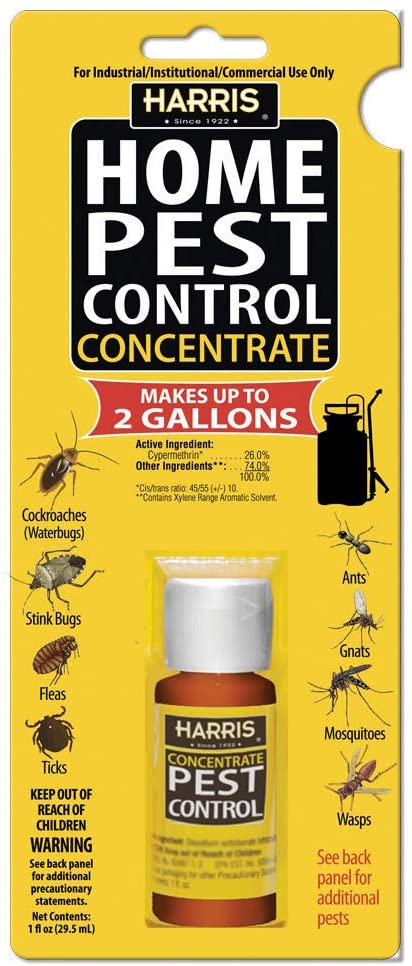Bed Bug Therapy Failure: Comparing Chemical Vs. Non-Chemical Solutions
In the world of insect control, specifically when taking care of the persistent concern of bed pests, the choice in between chemical and non-chemical therapy solutions can be an essential one. Both approaches supply unique benefits and downsides, affecting factors such as performance, safety considerations, and general price. By examining the nuanced details of each technique, a more clear understanding of which path to pursue in attending to a bed pest invasion can be achieved.
Effectiveness of Chemical Treatments
Chemical therapies for bed pest problems have actually been extensively recognized for their potent and quick efficacy in getting rid of these parasites. When taking into consideration the effectiveness of chemical treatments, it is crucial to comprehend that they can supply a extensive and quick solution to a bed bug issue.
Furthermore, chemical therapies have the benefit of supplying residual results, suggesting that they can proceed to eliminate bed insects even after the preliminary application. This residual activity is especially helpful in combating any type of prospective re-infestations. In addition, the fast action of chemical treatments can bring alleviation to people dealing with severe bed bug problems, allowing them to gain back control of their space quickly.
Safety And Security Issues With Chemical Solutions
One vital element that calls for cautious factor to consider when using chemical services for bed pest therapy is making sure the security of residents and the atmosphere. Exposure to certain chemicals made use of in bed insect treatments can lead to respiratory system concerns, skin inflammation, or other damaging reactions, especially in people with pre-existing problems or sensitivities.
In addition, the environmental influence of chemical remedies is an additional considerable consideration. Some pesticides made use of in bed bug therapies may be dangerous to valuable bugs, wildlife, and environments if they seep into the soil or water systems. It is vital to utilize chemical treatments sensibly, following safety and security standards, and taking into consideration less toxic choices to reduce these risks and ensure the effective and secure management of bed insect problems.
Benefits of Non-Chemical Methods
Considering the possible safety worries and environmental impact associated with chemical remedies for bed insect therapy, discovering non-chemical techniques provides a promising choice with a number of distinctive advantages. Non-chemical treatments are environmentally pleasant, as they do not add to air or water contamination, making them a sustainable selection for parasite control.
Furthermore, non-chemical services can be reliable in targeting bed insects, including hard-to-reach areas where chemical treatments might not permeate. Methods such as warmth therapy, vacuuming, heavy steam cleansing, and bed mattress coverings supply detailed obliteration without click site using hazardous chemicals. In addition, non-chemical techniques can be much less disruptive, requiring very little preparation and permitting quicker reentry right into dealt with locations. On the whole, choosing for non-chemical bed bug treatment approaches not only focuses on safety and environmental security yet also makes certain thorough and efficient bug control.
Limitations of Non-Chemical Treatments

In addition, non-chemical treatments often call for numerous applications to achieve effective elimination. This can be taxing and might not always guarantee total removal of all bed insects and their eggs, especially in covert or hard-to-reach areas.
Additionally, the success of non-chemical treatments greatly counts on correct application and thoroughness, which can be challenging for people without specialist experience. Poor application of non-chemical methods might lead to More hints incomplete eradication, resulting in persistent problems and the requirement for added treatments.
Therefore, while non-chemical treatments have their advantages, it is necessary to recognize these constraints and consider them when determining one of the most effective method for taking care of bed bug problems.
Cost Comparison: Chemical Vs. Non-Chemical Options
Provided the restrictions connected with non-chemical treatments, an important facet to review in the context of bed bug management is the cost comparison between chemical and non-chemical choices. In comparison, non-chemical treatments like warm treatment or steam can be more costly, with prices ranging from $1,000 to $6,000 for an entire home. While the first cost of chemical therapies may appear reduced, multiple treatments may be required to completely eradicate the invasion, potentially enhancing the total cost.
Verdict

Considering the prospective safety worries and environmental effect associated with chemical services for bed bug therapy, checking out non-chemical approaches provides an appealing choice with numerous distinctive advantages.Given the site link constraints linked with non-chemical treatments, a crucial element to examine in the context of bed insect administration is the expense contrast in between chemical and non-chemical choices. In comparison, non-chemical therapies like warmth therapy or heavy steam can be much more pricey, with costs ranging from $1,000 to $6,000 for an entire home. While the preliminary expense of chemical treatments may seem reduced, multiple treatments might be needed to fully eliminate the infestation, potentially enhancing the total expense.In final thought, when comparing chemical and non-chemical bed pest therapy alternatives, it is important to take into consideration effectiveness, safety and security, advantages, limitations, and price.